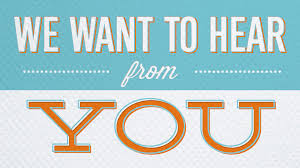Novice Teachers Become Better Teachers by Using Student Surveys
Written By: John Radosta, Milton High School
Across the country, more and more school districts are using “student input” as part of their teacher evaluation protocol, and it’s justifiably scary. The fear that some student will call you “mean” or be vindictive over a bad grade gives pause. But if you start by building an atmosphere of respect, and sharing the results with students, you will find that the bond of trust between you and your class will strengthen immeasurably, and so will their learning. As Joseph Campbell says, “The very cave you are afraid to enter turns out to be the source of what you are looking for.”
I started asking my students for a twice-a-year report card about eight years ago, and it did wonders for my practice. This year, I shared the idea with my mentee, and she took it up another level by putting it on line, which has brought an amazing leap in understanding of what our students need and want from us.
I start my year by telling students to memorize three sentences:
1. This work is important.
2. You can do it.
3. I won’t give up on you.
I try to remind them of it often, especially when the going gets tough. Somewhere near the end of first term, I give them my anonymous report card, which again reminds them of those goals, then asks how I have done. I provide statements such as “I feel as though I am progressing and learning in this class,” or “I feel comfortable asking questions in this class,” or “Mr. Radosta gives me the help/support I need to succeed in this class.” Each one is followed by a scale that ranges from “strongly agree” to “strongly disagree.” Then there are two open response questions: “Have you taken advantage of opportunities to enhance your grade?” and “Is there anything else I could do to help you succeed?” I do it again at the beginning of fourth term, as well.
Simply asking the questions gives me a world of information, because students are naturally honest, especially on an anonymous survey. But the key to building trust is to actually share the results. I show the tallies of the MC questions and discuss how I interpret them. Thankfully, my students generally feel comfortable, but there’s always a few that don’t, and I say publicly that reaching them is now my project.
More interesting is the list of open response answers, which I type up and display for all to see, good and bad. This, I think, is the most scary part, but also the most rewarding. When students see that I acknowledge even the harsh criticism (there’s been less of that over the years, and I think it’s because I do this), they know that I have to respond, and they will help me do it. It also helps some of those who feel less comfortable see that others do, and sometimes that gives a student the strength to take a risk. It helps me be more intentional in my teaching.
This year, as a Mentoring Leader in Milton, I am mentoring a second-year middle school teacher taking the MentoringinAction.com course EDU 645 titled, “Maintaining Your Balance.” Creating a student survey is one of the requirements for the course. She was inspired by my “teacher report card” and tweaked it to reflect what she wanted to learn from her students. She administered the student survey on-line through Google Classroom. The results are astonishing using an online tool. First, she is able to tabulate the responses instantaneously, and there’s none of that tedious re-typing of OR answers. While the surveys revealed that her students are generally comfortable and interested in class, the data also helped clarify some needs. She wrote in her reflection to me. She writes, “Some students suggested I give more consequences for misbehavior. So I did it and changed their seats. It is working. 2) There are other students who want more challenging work and differentiated lesson plans. Now I can offer options and know that is what they want.”
Getting immediate feedback from students using a survey allows her to respond to her students’ needs effectively, and allows her to reflect on her own practice to see what is working. The positive answers give her validation that she is doing a great job—something we often long to hear.
Giving anyone, especially our students, the opportunity to grade us can be daunting, but it doesn’t have to be. If we use surveys not to evaluate, but to provide opportunities for reflection and updating our practice, they can be highly effective. It also gives our students a voice and buy-in for their own learning, which is the goal for every classroom.



